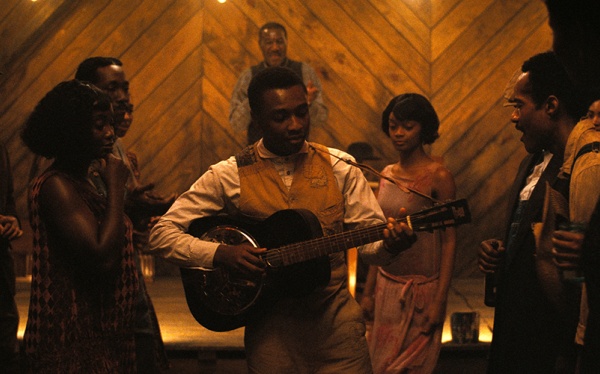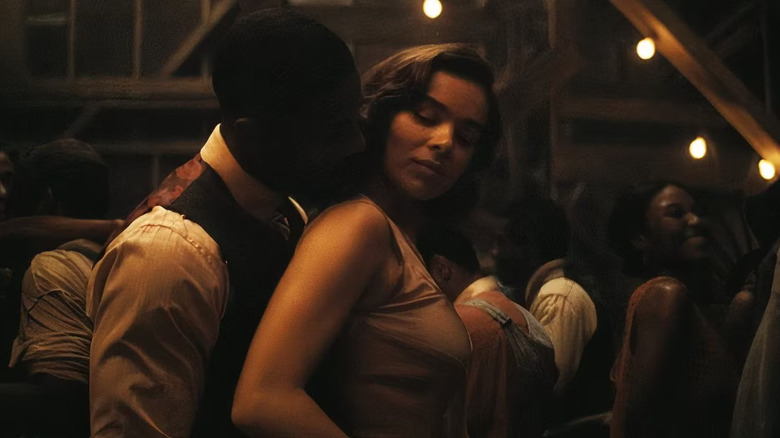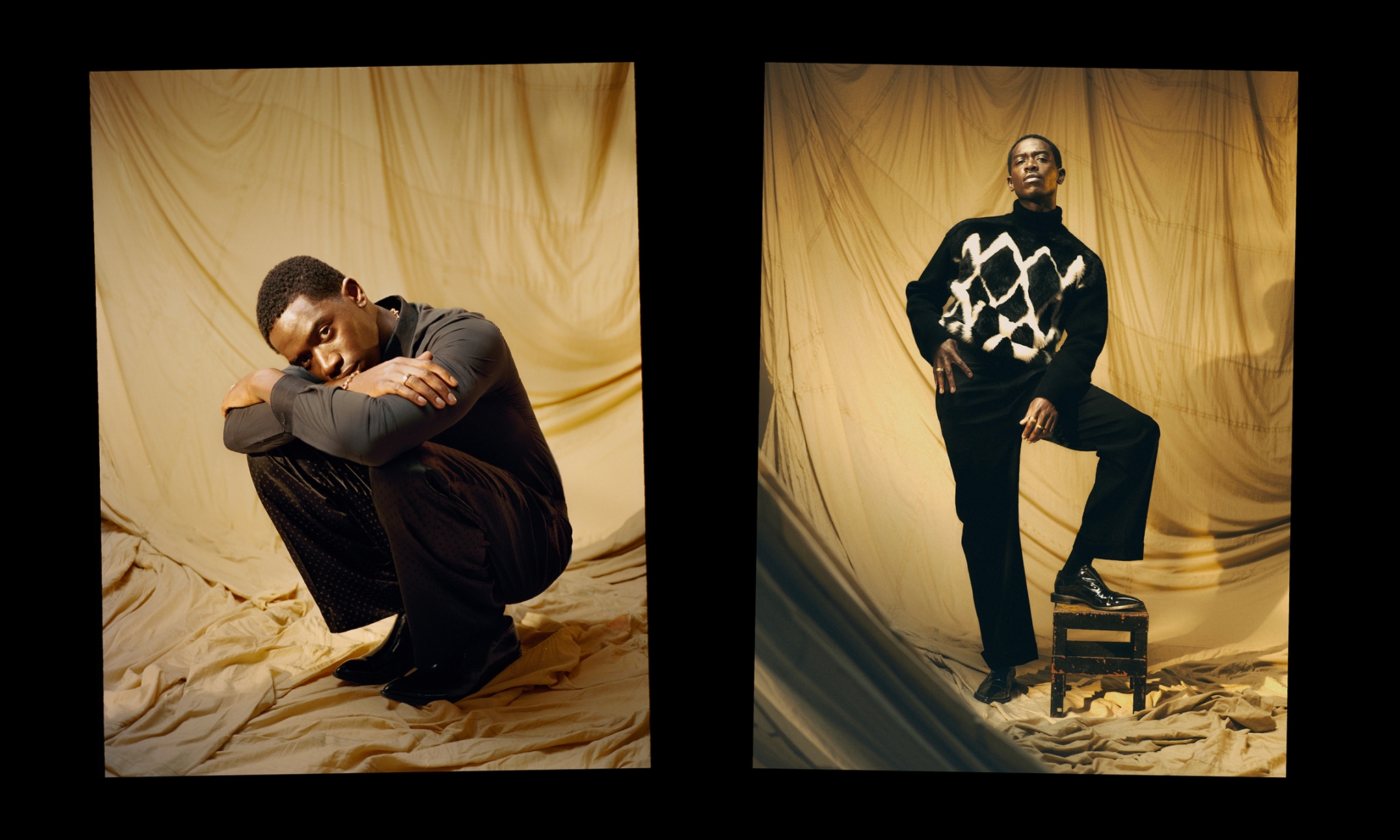

The Blues is the heart and soul of Ryan Coogler’s epic vampire blockbuster.
If you dance with the devil, you’d better hope he doesn’t follow you home.
Ryan Coogler’s Sinners is receiving widespread praise for its exceptional story and performances. Sinners is a supernatural period drama set in 1930s Mississippi, following twins Smoke and Stack, portrayed by Michael B. Jordan, as they return home after making a fortune up north in Chicago. Their plan is to open a juke joint, but they face danger in the form of vampires. While vampires are an intriguing part of the story, I believe that the music genuinely makes the film, and Sinners acts not only as entertainment but as a form of education, offering an experience of music and its meaning across cultures and time. Composed by Coogler’s longtime collaborator, Ludwig Göransson, the soundtrack and score help bring the film to life, uniting Blues artists past and present, from Geeshie Wylie, Robert Johnson, to Brittney Howard and Alice Smith.
Black music is desirable, especially when Black people are not, something bluntly pointed out in the film by Delroy Lindo’s Delta Slim. A musician, in a chilling scene, he recalls the story of his career in Blues, in particular his exploitation by white audiences and the way his partner, Rice, was violently lynched after being stopped on a train, trying to make a better life for himself in the North. We see an iteration of this in the appropriation of Black culture by white artists, whilst black artists are shut out of cultural spaces.
Blues and Jazz are considered the genres closely related to music from West and Central Africa. The bango, a core instrument, was influenced by the Kora, a Gambian instrument with twenty-one strings. The blues genre emerged during the Reconstruction era and Jim Crow Mississippi, with music centering the experiences of freedmen and women in a system that still found numerous ways to disenfranchise, discriminate and harm African Americans.
Sinners’ use of music is not only to educate on history and create an atmosphere of joy, but it is also to weave in mythology and the supernatural. Music, especially the Blues, is painted as a sinful, sensual and attractive form of the devil. One of the film’s main characters, Sammie (portrayed by Miles Canton) is a young Blues singer who is a cousin to the twins, Smoke and Stack (Michael B. Jordan). He performs a song at the juke joint and in a surreal, euphoric scene, summons the spirits of Black musicians and dancers, past, present and the future.
We see the genres that the Blues inspired. From Hip-Hop, Country, Rock and Roll, the blues and Black people have had a strong influence on music in America and across the world. The scene really shows how music transcends time and space, generations. The music our grandparents loved is music passed down to us, and the music their grandparents loved is passed down. Even when everything is taken from us, music is the ultimate connector.

Sinners (2025), directed by Ryan Coogler
This myth and the film demonstrate how sinfulness is inexorably tied to goodness. Music acts as a form of connection, rebellion. The existence of a juke joint, despite threats from the Klan, is living proof of the ability of music to bring joy, no matter the circumstances.
The preacher, Sammie’s father, Jedidah, warns that the Blues are supernatural. The idea of Blues being the ‘devil’s music’ is an old-held superstition. Robert Johnson was a musician from Mississippi. He performed in juke joints across the Mississippi Delta. Although his recording career spanned only seven months, he is considered the master of the blues, particularly the Delta blues style, and one of the most influential musicians. There is little we actually know about Johnson’s life, and even his death is shrouded in mystery, but the Faustian mythology around him persists. The story goes that as a young man, Robert Johnson met the devil at a crossroads near the plantation he worked on. The Devil played a few chords on his guitar, giving him mastery over the instrument. He gave his soul in exchange for talent.
Johnson’s mythology is not directly mentioned in the film, but the idea of the blues being sinful and dangerous calls to a larger point made in the film. It asks a question many musicians and many black people ask themselves: What would you give to achieve greatness? For Sammie, he has to give up his family. Same with the twins, Smoke and Stack (Michael B. Johnson), who give up their connections to nearly everyone else to achieve greatness in Chicago. The sin is not in the music but the price paid to achieve greatness.
This myth and the film demonstrate how sinfulness is inexorably tied to goodness. Music acts as a form of connection, rebellion. The existence of a juke joint, despite threats from the Klan, is living proof of the ability of music to bring joy, no matter the circumstances.

Sinners (2025), directed by Ryan Coogler
On the flip side, Sinners shows how music attracts evil, like Remmick (Jack O’Donnell), who wants Sammie’s stories and music for himself. In a chilling scene, as the vampire Remmick taunts the group inside with an alluring jig to The Rocky Road to Dublin. In a film that is so centred on the black south, it seemed out of place. The song was written by D.K. Gavan, an Irish poet in the 19th century, and tells the story of an Irish man moving from his home of Tuan to Liverpool. Despite a lively tune, much like the blues, Irish folk and rebel music were a way to resist British occupation and the erasure of Irish culture. “These songs are a record of times that cannot be wished away by those presenting a bland, ahistorical veneer of unity,” wrote Jack Sheehan for the Irish Times.
The use of Irish folk—and an Irish villain—is a clever move to demonstrate how even those oppressed can perpetrate colonial violence. In this instance, vampirism is a metaphor for assimilation under the guise of community and unity. Music acts not only as a form of connection, but assimilation. A song sung in rebellion is used to control and lure, bastardising its origins to perpetuate the same evil done upon Remmick by the British.
What Sinners truly shows is how music and art are a reflection of the identity, community and history of the oppressed. It not only elevates the film, but also helps tell the story as well as dialogue and costumes. If you didn’t care about the Blues already, you certainly will by the end of this film.





